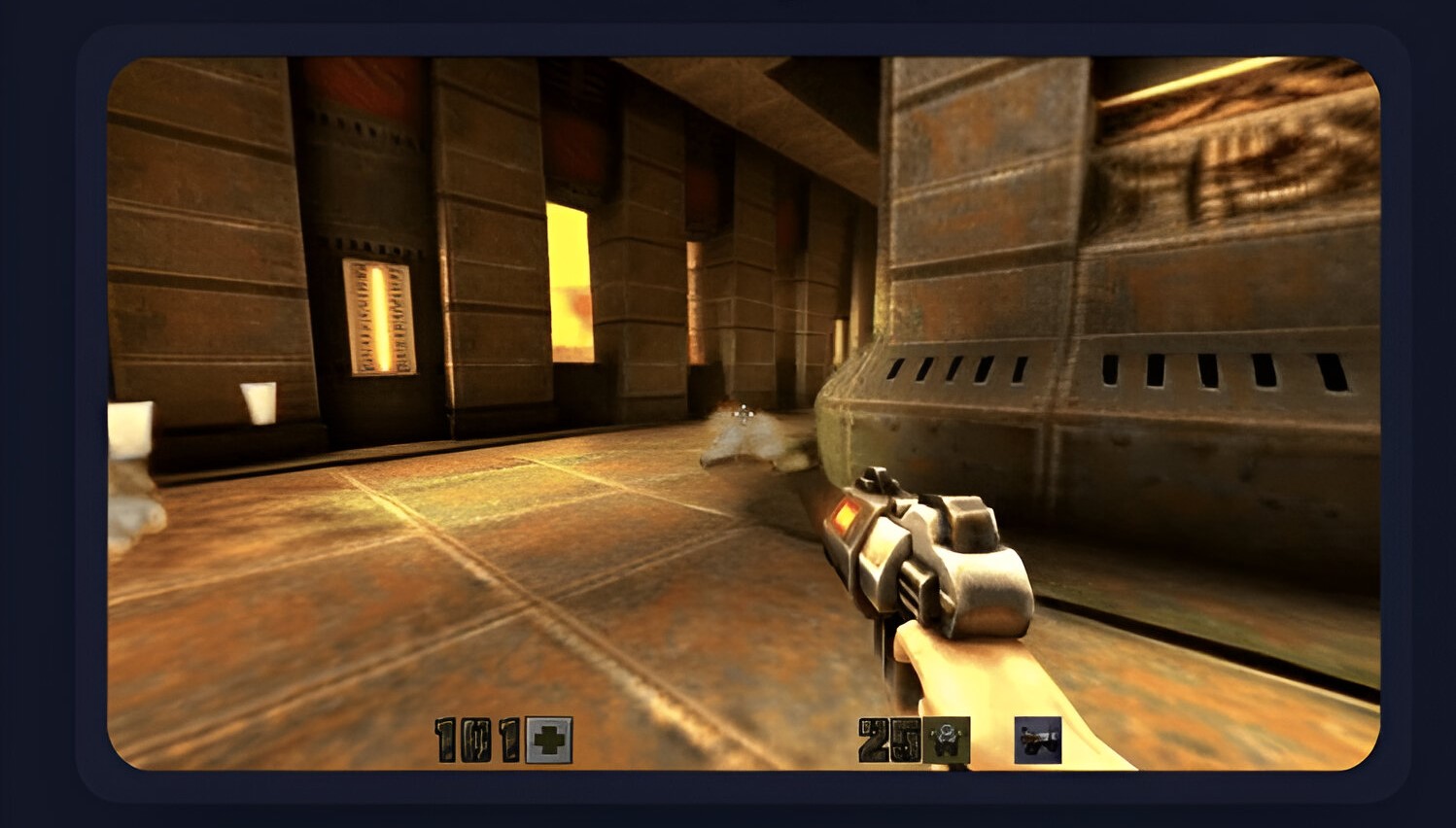Microsoft has launched an AI-generated version of the iconic video game Quake II, showcasing the capabilities of its Copilot AI platform and Muse family of AI models. Released on April 6, 2025, this groundbreaking tech demo represents a significant milestone in gaming technology, offering a glimpse into the potential future of AI-driven gaming. While the demo highlights impressive advancements, it also exposes the limitations and challenges of using artificial intelligence to recreate classic gaming experiences.
Why it matters: The AI-generated version of Quake II demonstrates how generative AI can be used to simulate game environments, potentially revolutionizing how games are preserved, adapted, and experienced across platforms.
How It Works
The AI-generated Quake II is accessible via a browser-based platform, allowing players to navigate a single level using their keyboards. Unlike traditional gaming experiences, players interact directly with the AI model itself, effectively “playing the model” rather than playing the original game.
Key features include:
- Real-Time Interaction: Players can move, jump, crouch, shoot, and interact with the environment in ways reminiscent of the original Quake II.
- AI Integration: The Muse family of AI models powers the experience, simulating the game’s world and enabling dynamic interactions within the environment.
This project was made possible by Microsoft’s acquisition of ZeniMax Media, the parent company of id Software—the original developer of Quake II. Researchers expressed excitement about using AI to simulate classic games but emphasized that this demo is a “research exploration” rather than a fully polished gaming experience.
Limitations and Challenges
Despite its innovative approach, Microsoft acknowledges several limitations in the AI-generated version:
- Fuzzy Enemies: Visual inconsistencies make enemy characters appear blurry and less defined.
- Object Permanence Issues: The model struggles to remember objects that are out of view for more than 0.9 seconds, leading to unusual gameplay scenarios such as enemies disappearing or teleporting when players look away.
- Inaccurate Counters: Damage and health indicators are often unreliable, affecting gameplay balance.
These limitations highlight the experimental nature of the project and underscore the challenges of using generative AI to replicate complex gaming mechanics.
Broader Implications for Gaming
Microsoft’s initiative aligns with CEO Phil Spencer’s vision of using AI models to preserve classic games by making them portable across platforms. This approach has sparked debate among industry experts, especially with the development of WHAMM! Real-time world modelling of interactive environments, which could significantly impact the future of gaming.
- Supporters argue that AI-driven game preservation could make classic titles more accessible to modern audiences while reducing reliance on legacy hardware.
- Critics contend that the essence of classic games lies in their original code and design elements, which may not be fully captured by AI recreations.
The demo serves as both a proof-of-concept for integrating generative AI into gaming and a reminder of the complexities involved in preserving gaming history.
Looking Ahead
While the AI-generated Quake II demo is far from perfect, it represents an exciting step forward in gaming technology. As Microsoft continues to refine its Muse models and address technical limitations, the potential for creating immersive and adaptive gaming experiences grows.
Generative AI is paving the way for new forms of interactive storytelling and dynamic gameplay, while also offering innovative solutions for preserving classic games in an increasingly digital world. In a related move, Microsoft has expanded access to these powerful tools by making Copilot’s advanced AI features free for all users.




















